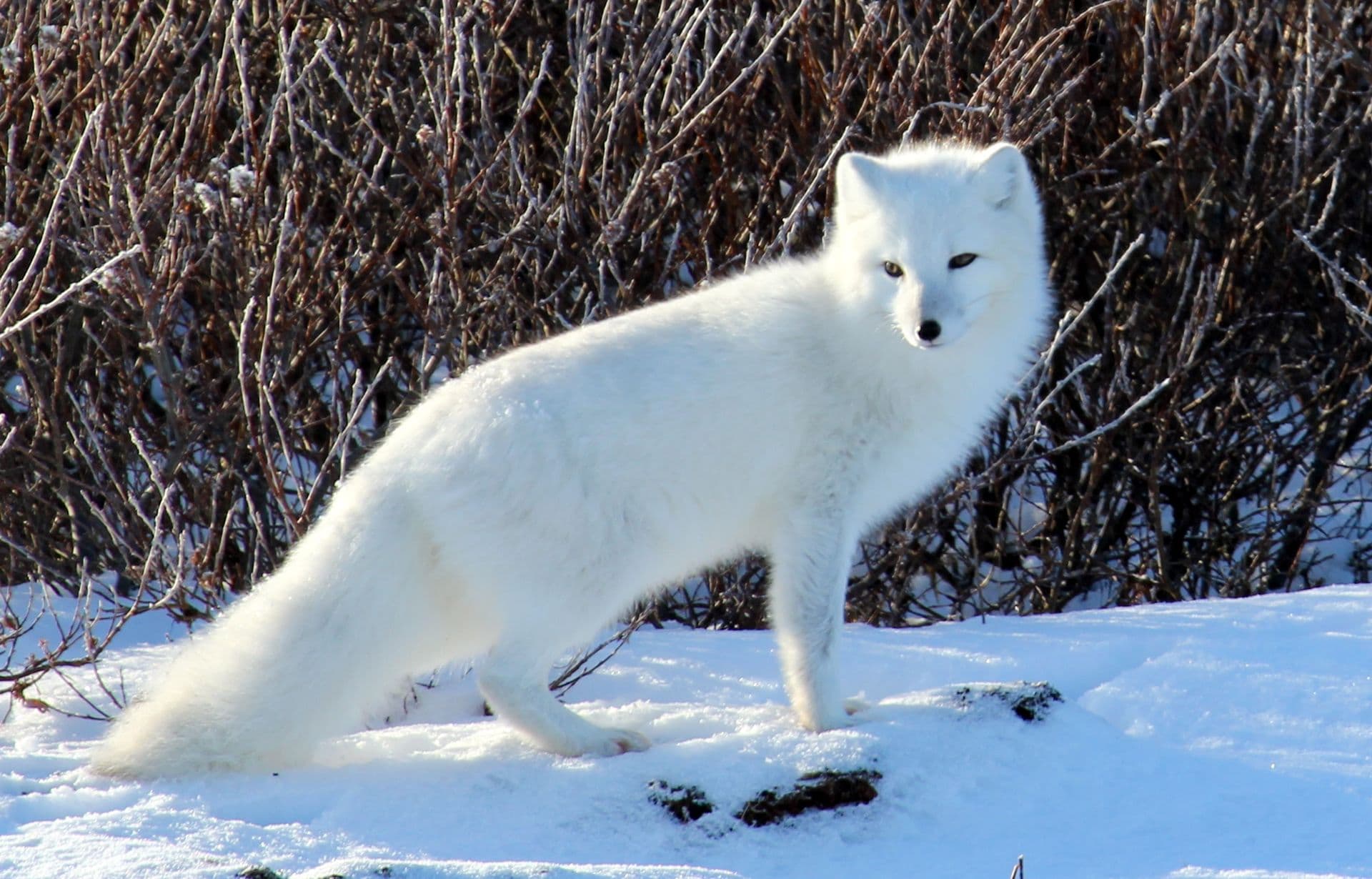Foxes are small to medium-sized wild animals known for their pointed faces, bushy tails, and clever nature. They belong to the dog family and are found in many places around the world. Foxes are quick, curious, and often active at night.
Scientific Classification
-
Kingdom: Animalia
-
Phylum: Chordata
-
Class: Mammalia
-
Order: Carnivora
-
Family: Canidae
-
Genus: Vulpes (most common foxes belong here)
Common Names
-
Fox
-
Red Fox
-
Desert Fox
-
Arctic Fox
-
“Bush dog” or “clever dog” (nicknames in different cultures)
Foxes are often part of local stories, where they are seen as smart and tricky animals.
Geographic Distribution
Foxes live on every continent except Antarctica. They adapt to many environments such as:
-
Forests and grasslands
-
Deserts and tundras
-
Mountains and farmlands
-
Even in cities and towns
They dig underground burrows or find shelter in thick bushes or abandoned holes
Image showing a Red Fox standing alert in a green forest (Source: Pexels)
Physical Characteristics
Foxes look like small dogs with cat-like behavior.
-
Sharp, triangular ears
-
Long, fluffy tails (called a “brush”)
-
Slender legs and narrow snouts
-
Coat color varies: red, grey, white, or brown
They move silently and quickly, making them excellent hunters and escape artists.
Species of Foxes
1. Red Fox (Vulpes vulpes
Image showing a Red Fox walking through a snowy field (Source: Pexels)
Key Facts:
-
Most widespread fox species
-
Reddish coat, white belly, black legs
-
Lives in forests, farmlands, and even urban areas
-
Known for its intelligence and adaptability
2. Arctic Fox (Vulpes lagopus
Image showing Arctic Fox in thick white winter fur (Source: Polartours)
Key Facts:
-
Lives in cold regions like the Arctic
-
Thick white fur in winter, brown in summer
-
Can survive freezing temperatures
-
Small ears and short nose help retain heat
3. Fennec Fox (Vulpes zerda
Image showing Fennec Fox with huge ears sitting on desert sand (Source: Freepik)
Key Facts:
-
Smallest fox species
-
Huge ears help cool its body and hear prey underground
-
Found in the Sahara Desert
-
Cute appearance makes it popular as an exotic pet
What do foxes eat?
Foxes are omnivores, which means they eat both animals and plants.
Their diet includes:
-
Mice, rabbits, and birds
-
Insects, lizards, and frogs
-
Fruits, berries, and roots
-
Leftovers from human food (especially in cities)
They are clever hunters and often store extra food by burying it.
Fun facts
-
A fox’s tail helps with balance, warmth, and communication.
-
Foxes make over 40 different sounds to communicate.
-
They usually hunt alone, not in packs.
-
The female is called a vixen, and the baby is a kit or cub.
-
Foxes have excellent hearing, even detecting prey underground.
Importance to Humans
Positives:
-
Help control rodent populations naturally
-
Popular in folktales, stories, and cartoons
-
Attract photographers and wildlife lovers
-
In some areas, their fur is used (controversially)
Negatives:
-
May attack poultry like chickens and ducks
-
Can spread diseases like rabies in some regions
-
Sometimes seen as pests on farms
Health & common issues
Foxes, whether wild or in captivity, can suffer from health problems.
Common health problems include the following:
-
Mange (skin disease caused by mites)
-
Parasites (worms, ticks, fleas)
-
Injuries from traps or vehicle hits
-
Rabies or other viruses
Veterinary Care (for rescued or captive foxes):
-
Clean, safe enclosures
-
Regular deworming and vaccinations
-
Balanced diet with protein and vitamins
-
Enrichment to prevent boredom and stress
Conservation Status
Most fox species are not endangered, but their populations face some threats:
-
Habitat destruction
-
Hunting for fur
-
Road accidents
-
Poisoning and trapping in farmlands
The Red Fox and Fennec Fox are listed as Least Concern, but some rare island foxes are protected due to low numbers.
Fox vs Dog
| Feature | Fox | Dog |
|---|---|---|
| Size | Smaller and lighter | Varies (small to large) |
| Behavior | Solitary and sneaky | Often social and loyal |
| Tameability | Harder to tame | Domesticated easily |
| Tail | Long, bushy | Shorter, varies by breed |

Image showing Fox cub peeking out of its den in the early morning light (Source: Shutterstock)
Do you need help with wildlife rescue or advice on farm protection from foxes. Contact Doctor Hulk Veterinary Hospital Today @ 08143397614.













Reviews
There are no reviews yet.